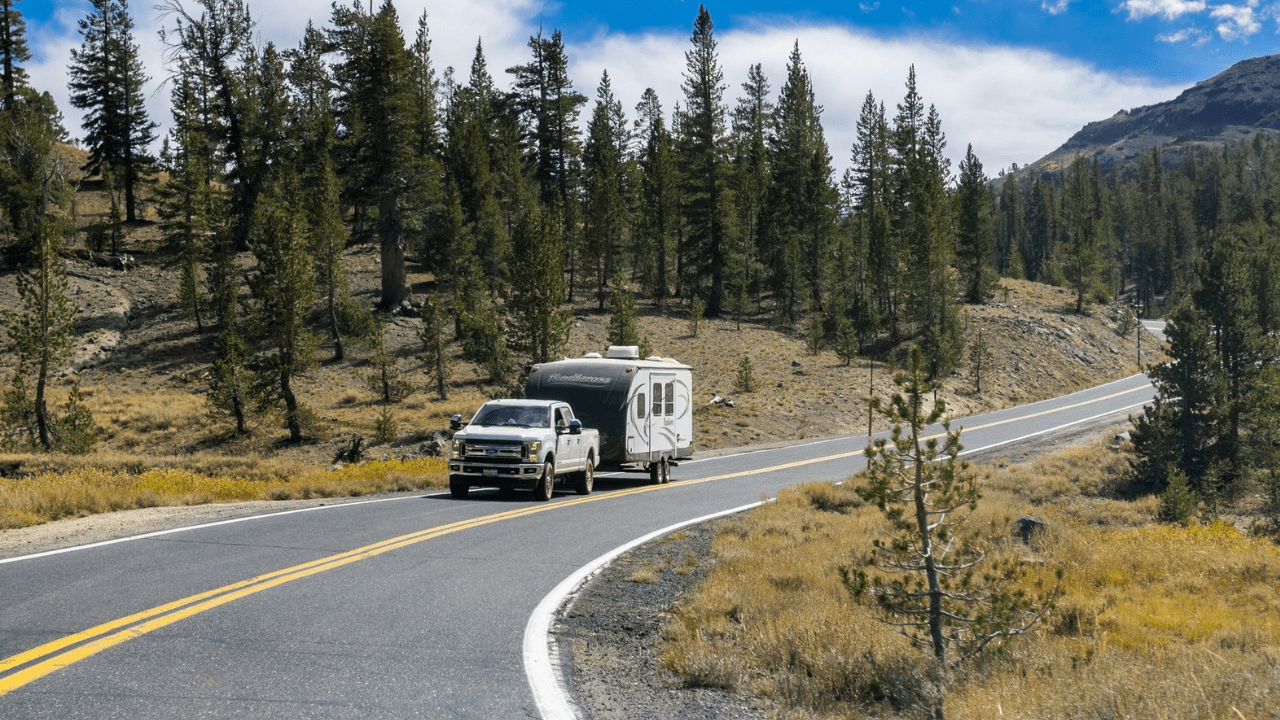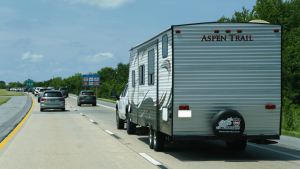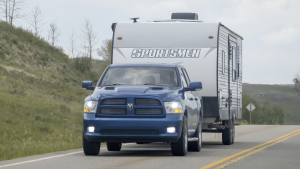Towing might seem straightforward, but there’s more to it than hooking up a trailer and hitting the road. If you’ve ever wondered how much you should tow, versus how much your vehicle says it can, you’re not alone. That’s where the 80% rule comes in.
The 80% rule has been a long-standing guideline among people who tow trailers of all kinds. It’s not a legal requirement, but it’s widely recommended for good reason.
Important: The 80% rule is worth keeping in mind as a safety buffer, but safe towing goes beyond a single number. Staying under the tow rating, payload, axle limits, and ensuring the trailer length is a good match for your vehicle are critical.
What is the 80% Towing Rule?
The 80% rule suggests towing no more than 80 percent of your vehicle’s rated towing capacity. If your truck is rated to tow 10,000 pounds, this means you should aim for no more than 8,000 pounds of actual trailer weight.
This extra margin gives you room for unexpected variables: cargo you forgot to weigh, water in the tanks, a full cooler, wind resistance, steep grades, or driving at elevation. These factors add up fast. Keeping your load lighter gives you a bit more breathing room.
Why Not Tow the Max?
Manufacturers test and rate their vehicles under specific conditions, but those numbers don’t always reflect everyday use. Towing at or near the maximum rating means your engine, transmission, cooling system, brakes, suspension, and tires are all working near their limit.
That extra strain can shorten the life of parts and affect performance. It also leaves less margin for error, especially in emergencies, poor weather, or rough terrain.
Legal Limits Still Apply
The 80% rule is only a guideline. Actual legal limits are based on your vehicle’s Gross Vehicle Weight Rating (GVWR), Gross Combined Weight Rating (GCWR), and axle ratings. These values are printed on your vehicle’s certification label (usually inside the driver’s door). You should never exceed any of them.
State laws vary when it comes to towing rules, including when brakes are required and how much tongue weight is allowed. The 80% rule doesn’t override any of those regulations.
💡Understanding Key Towing Terms:
- GVWR: The maximum total weight of your fully loaded vehicle (including passengers and gear)
- GCWR: The maximum combined weight of your vehicle and trailer
- Tow Rating: The manufacturer’s recommended maximum towing weight
- Payload: How much weight you can carry in your vehicle, including tongue weight, passengers, pets, and cargo
- Tongue Weight: The downward force the trailer applies to your hitch. Aim for 10–15% of total trailer weight for bumper-pull trailers, or 15–25% for fifth wheels
- Hitch Rating: The maximum weight your hitch can support
Safety Considerations Beyond Weight
Weight matters, but it’s not the only thing that affects towing safety. The way you drive, the condition of your trailer, and what’s under your tires all play a role.
- Speed Matters: Many trailer tires are rated for 50 to 65 mph. Towing faster than that can lead to heat buildup and blowouts. Check the sidewalls of your trailer tires for their maximum speed rating and adjust your driving accordingly.
- Tire Pressure: Before every trip, check tire pressure on both your vehicle and trailer. Underinflated tires wear faster, run hotter, and are more likely to fail. Overinflated tires reduce traction and can lead to uneven wear. Use the cold inflation pressures listed on the door jamb (tow vehicle) or sidewall (trailer).
- Braking and Brake Controllers: If your trailer weighs more than 3,000 pounds (or less, depending on your state), it likely needs its own braking system. A functioning trailer brake controller in your vehicle is just as important. Adjust the gain to match your load and check the brake response before hitting the highway.
- Stopping Distance: The heavier your load, the longer it takes to stop. Leave more following distance and avoid sudden braking. Trailer brakes help, but they don’t eliminate momentum.
- Walk-Around Inspections: Before every trip, do a full walk-around of your setup. Check the hitch, chains, breakaway cable, wiring, tires, lugs, lights, and any cargo tie-downs. Small issues have a way of turning into big problems when you’re towing at speed.
Related: Think Your Truck Can Tow That Camper? Read This Before You Hitch Up
One More Tip: Weigh It Yourself
You can get an accurate weight reading at many public truck scales. Some are found at truck stops or recycling centers. Weigh your loaded vehicle and trailer, preferably with all your passengers and cargo inside. This is the best way to verify that you’re within safe and legal limits.
Wrapping Up
The 80% towing rule isn’t required by law, but it’s a practical safety buffer that many experienced haulers follow. It adds some margin for unpredictable variables and helps reduce wear on your vehicle. Just as important, don’t ignore real-world factors like speed, tire condition, or braking power, as well. Towing safely takes more than just meeting the numbers.







Write a comment